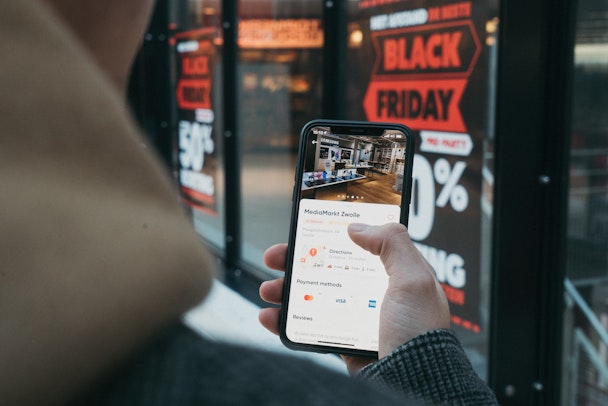3 things marketers can learn from Shopify’s 2022 e-commerce report
E-commerce has boomed over the past two years, supercharging businesses with the ability to take advantage. The latest report from Shopify has captured where the industry growth is. The Drum has pulled out the best bits for marketers.

E-commerce headwinds are forcing a longer-term focus on brand building
Publishers such as Future saw huge boosts from the e-commerce capabilities of its magazine portfolio, while individual sellers across sites including Etsy and Depop reaped the benefits of new audiences. Older cohorts took to buying and selling digitally in a way that they might not have done unless spurred on by the pandemic.
Buying online led to further dominance of incumbents such as Amazon, which has access to consumer journey data smaller sellers and marketplaces cannot compete with. Worse, supply chain issues and increased competition mean that headwinds to e-commerce growth will start to emerge over the next few years
Here, then, are three key facts and figures to bear in mind around the e-commerce ecosystem over the next few years.
Cost of acquisition
According to Shopify’s 2022 Future of Commerce report, conducted in partnership with Forrester Consulting, the biggest challenge facing e-commerce is around customer acquisition. The cost of attracting new customers is set to rise in the face of increased direct-to-consumer (DTC) competition and the increasing cost of advertising.
While the report states the e-commerce market is expected to grow by almost $11tn between 2021 and 2025, that growth has attracted a vast number of competitors within the space. That is due to the decreasing barrier to entry to buying and selling online, with platforms including Shopify, Wix and Squarespace allowing individual sellers parity in terms of tech with larger companies.
The report states that ROI on ads is decreasing in turn: “With privacy laws that limit marketers’ ability to target ads and consumers who are better at blocking ad interruptions, it’s becoming tougher to get a decent return on advertising spend.
“The cost per click for paid search ads increased by 15% between the second and third quarters of 2021 alone.”
Worse still, some of the hope that came with segmenting audiences to better target ads has failed to materialize. The report states that when the Harvard Business Review tested the accuracy of the digital profiles data brokers sell, the results were “dismal”: “The age tier was only correct 23% of the time, and gender was properly identified in well below half of cases.”
Publishers continue to push
While Future has undoubtedly been the biggest beneficiary of the e-commerce boom, with its success allowing its expansion into the US, other publishers have benefited as well. BuzzFeed in particular sees a lot of headroom in the space. That is in part due to users’ faith in the recommendations of those publishers with whom they have spent time for entertainment and information, as well as shopping.
Becca Maier, director of international commerce at BuzzFeed, told us in January: “When a user is landing on the new Shopping experience, they are looking for something in particular and specifically want our recommendations on what to buy. They are intent-based shoppers who need some extra research, seal of approval [and] advice to follow through on that conversion, and users who are landing on the new Shopping section want that advice from us.”
BuzzFeed also found that user habits favor social and mobile shopping experiences. While desktop users typically have a higher CTP, mobile users are far more likely to actually click on an affiliate link. BuzzFeed sees a 71% CTP on desktop compared to 66% CTP on mobile into a post from search results, but while 66% on mobile web tap an affiliate link, only 26% of desktop users do the same.
Brand building to counter the costs
In order to counter the rising cost of acquisitions, the Shopify report suggests brands focus less on short-term returns and more on long-term brand building.
While the pre-existing brands have an advantage in that respect, using growth marketing techniques can potentially counter the diminishing return on ad spend: the report specifically recommends a 60/40 split between brand building and short-term performance marketing.
That requires marketers to think outside traditional channels, particularly for attracting new audiences at the very start of the purchase funnel. Shopify highlights the work of cosmetic brand Doe Lashes, which shares content on Discord due to a crossover between audience segments. It also notes that “on the apartment design game Design Home, players can purchase physical versions of products in their virtual apartments.”
That created a pre-existing relationship with the brand that can be bolstered further through community interaction, rather than immediately launching and expecting the sales to roll in. The report also notes that in 2022 52% of shoppers are more likely to purchase from a company with which they share values. That is a validation of Unilever’s strategy to focus upon purpose – despite investor backlash.
While the headwinds of e-commerce may be starting to blow, the overall boom in spending online continues. Instead of focusing on short-term performance marketing exclusively, the most successful sellers will be those that consider channels very carefully, and prioritize brand building with more engaged audiences.

